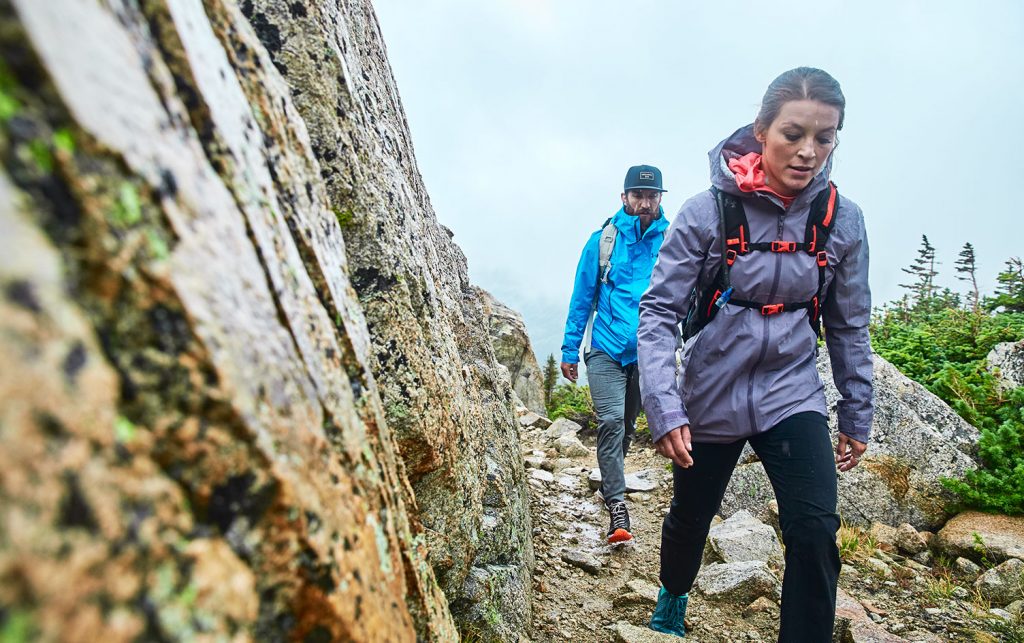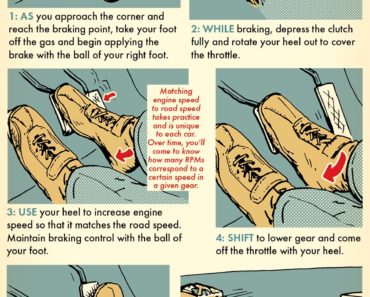
Whether you’re a runner, walker or cyclist, getting into hiking can be a great way to mix things up — and keep your training regimen from getting stale. It’s also low-impact, great for building lower-body strength and can help lower overall stress levels.
If you’re thinking about trying an all-day hike for the first time, use these five tips to stay safe, comfortable and have as much fun as possible.
1. KNOW YOUR HIKING FITNESS LEVEL
Whether you’re a beginner or an experienced hiker, it’s important to choose a trail within your current fitness level and ability. If you aren’t sure what you’re capable of, choose a hike that’s a shorter distance than you walk or run as a workout on flat, paved surface.
To determine how difficult a particular trail is going to be for you to complete, here are some other factors to consider:
- Know the number of feet of elevation gain: This will let you know how steep the trail is, which will give you an idea of the pace you’ll be able to maintain. For moderate trails, two miles per hour is usually doable, but you may need to add time to your planned schedule depending on the elevation gain.
- Consider the conditions: This will need to be researched beforehand so that you can plan accordingly. Extreme heat, rainy weather, wind and dropping temperatures at certain times of the day should all be considered, as these conditions can slow your pace and make your hike much more physically taxing.
- Difficulty of the terrain: A well-groomed trail isn’t the same as an unmarked hike over loose rocks. Make sure you’re aware of the terrain on the trail and only take on surfaces you feel comfortable navigating.
2. BRING THE ESSENTIALS
Outside of ultra-marathoners, a big difference between running and hiking is the length of time you’ll be exercising. An all-day hike will take a significant amount of planning, and you’ll need to be prepared with the right gear to be as safe and comfortable as possible. Here are a few of the essentials you’ll need to have in your backpack:
- A local map, hiking map and compass for navigation.
- Sunscreen, a hat and sunglasses for protection against the sun.
- Clothing that matches the possible conditions, including items that are easy to layer.
- Food and water are always essential, but make sure you bring more than you think you might need. One hundred ounces of water or more may be needed for hikes last more than 4–5 hours.
- A headlamp or other light source, even if you don’t plan to be out after dark. This will protect you just in case you get stranded or lost.
- A first-aid kit with all of the basics to treat a trail injury. A whistle or other device that will help you be located in an emergency situation is also a good idea.
- A multi-tool or knife.
- Matches or other fire-starting tools.
- A cell phone or satellite messenger to reach someone in an emergency.
3. MAKE AN ITINERARY
Letting others know where you plan to be and how long you’ll be gone is always recommended for safety purposes. Preparing a trip plan that details all of the basics of your hike and leaving it with a loved one who can call for assistance if you don’t return can prevent you from being stranded. Here’s some of the information you should include in your trip plan:
- Name and location of the trail along with your intended route.
- How long you expect the hike to take and what time you plan to return.
- What safety equipment you’re carrying with you.
- Who to contact should an emergency arrive.
While you’re on the trail, also make sure you sign in and out of all registers so others know where you are in case of an emergency.
4. USE PROPER FOOTWEAR AND TREKKING POLES
Like running, your hiking footwear makes a big difference in your comfort on the trail. Ill-fitting hiking boots that cause blisters or hurt your feet can cause problems after a few hours on the trail. After you’ve found a pair that fits you well, it may be a good idea to wear them a few times before you head out for your hike to break them in and make sure they’re comfortable enough to wear all day.
To improve your stability and reduce the strain on your knees, trekking poles or a hiking stick can also help you navigate tough terrain. They’ll also reduce fatigue as your hike wears on and can be used to create a wider stance to help balance when crossing streams or hiking on loose surfaces.
READ MORE > 14 BREATHTAKING HIKING PHOTOS FOR NATIONAL TAKE A HIKE DAY
5. PACE YOURSELF (AND KNOW WHEN TO TURN AROUND)
If you’ve ever run a marathon, you’ll know how important it is to pace yourself in the first half of the race. Likewise, on a day-hike, pacing yourself appropriately helps immensely as the day wears on. Going too hard in the beginning can leave you exhausted halfway through and make it more difficult to complete. Instead, start out slow, pace yourself and make sure you conserve your energy (particularly uphill) for the second half of your hike.
On the off chance something goes wrong, don’t be afraid to end your hike early and turn around. Running out of water, an injury and dwindling daylight are all valid reasons to end your hike before you reach your destination. Putting yourself in a dangerous situation just to reach the top of a peak is never worth the risk. You can always complete your hike a different day if things don’t work out.
GEAR UP FOR YOUR NEXT HIKE
> Men’s Hiking Gear
> Men’s Hiking Boots
> Women’s Hiking Gear
> Women’s Hiking Boots
The post 5 Tips for Beginning Day Hikers appeared first on Under Armour.
(via MyFitnessPal Blog)






